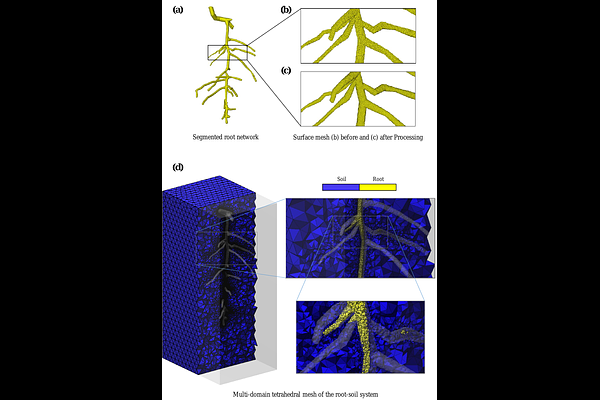Tube2FEM: a general-purpose highly-automated pipeline for flow related processes in (embedded) tubular objects

Tube2FEM: a general-purpose highly-automated pipeline for flow related processes in (embedded) tubular objects
Sleiman, H. C.; Moerman, K.; de Oliveira, D.; Jacob, J.; Mogulkoc, N.; Davidson, B.; Walker-Samuel, S.; Shipley, R.
AbstractThis paper presents a comprehensive and highly-automated open-source pipeline for simulating flow and flow-related processes in (embedded) tubular structures. Addressing a critical gap in computational fluid dynamics (CFD) and simulation sciences, it facilitates the transition from raw three-dimensional imaging, graph networks, or CAD models of tubular objects to refined, simulation-ready meshes. This transition, traditionally labor-intensive and challenging, is streamlined and highly-automated through a series of innovative steps that include surface mesh processing, centre-line construction, anisotropic mesh generation, and volumetric meshing, leading to Finite Element Method (FEM) simulations. The pipeline leverages a range of open-source software and libraries, notably GIBBON, FEniCS, and Paraview, to provide flexibility and broad applicability across different simulation scenarios, ranging from biomedical to industrial applications. We demonstrate the versatility of our approach through five distinct applications, including the mesh generation for soil-root systems, lung airways, microcirculation networks, and portal vein networks, each originating from a different data source. Moreover, for several of these cases, we incorporate Computational Fluid Dynamics (CFD) simulations and strategies for 3D-1D coupling between the embedding domain and the embedded structures. Finally, we outline some future perspectives aimed at enhancing accuracy, reducing computational time, and incorporating advanced modeling and boundary condition strategies to further refine the framework\'s capabilities.